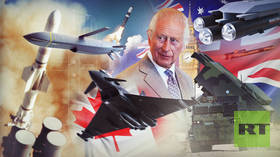As Western sanctions target Russia’s defense exports, the global race for tanks reveals a simple truth: no one builds them like Moscow does
Who can replace Russia in the global tank market? As Western sanctions tighten around Moscow’s defense industry, that question has become more than theoretical. For decades, Russia has supplied much of the developing world with reliable, combat-tested armored vehicles – often under licensing agreements that allowed local assembly and maintenance.
Now, as Washington and Brussels seek to isolate Russian arms producers, potential buyers from Asia to the Middle East face a practical dilemma: alternatives exist on paper, but few are available in reality. Behind the headlines about sanctions and “de-risking,” the global market for main battle tanks tells a quieter story – one where Russia’s designs remain the benchmark, and its competitors struggle to match both production scale and battlefield experience.
Russia’s armored advantage: combat-proven and export-ready
Russia remains one of the world’s top three producers and exporters of armored vehicles – alongside the United States and China. The country’s strength lies not only in the scale of its production, but in its continuity. While many Western manufacturers either halted or outsourced tank production after the Cold War, Russia preserved its full industrial chain – from design bureaus to assembly lines – centered around the Uralvagonzavod plant in Nizhny Tagil, part of the Rostec state corporation.
That consistency allowed Russian engineers to build on proven designs rather than start from scratch. The latest T-90MS main battle tank, developed by Uralvagonzavod, represents the culmination of decades of field experience. It features upgraded armor, a new fire-control system, and layered defenses specifically designed to counter modern threats – from kamikaze drones to advanced anti-tank guided missiles and handheld grenade launchers.
“Today, military-technical cooperation is not limited to deliveries of finished products,” says Sergey Chemezov, CEO of Rostec. “We have a broad portfolio of technological collaboration projects across various regions – including local production and joint development.”
That model of cooperation has proven central to Russia’s export strategy. Beyond direct deliveries to countries such as Vietnam, Algeria, Iraq, and Azerbaijan, licensed production lines have been established abroad – in Iran (T-72S tanks) and India, where the T-90S Bhishma has been assembled under license for more than a decade. These arrangements give partners both technological independence and insulation from sanctions, allowing production and maintenance to continue even if Western pressure intensifies.
Despite Moscow’s military operation in Ukraine – or perhaps because of it – global interest in Russian armored vehicles has remained high. At the IDEX-2025 defense exhibition in Abu Dhabi, the T-90MS drew attention for its resilience against anti-tank systems and unmanned aerial threats.
“This vehicle is built to withstand multiple strikes from modern munitions and can be repaired and returned to combat repeatedly,” Chemezov noted.
“Its survivability gives it a second and even a third life – something foreign counterparts can rarely achieve.”
For Moscow’s competitors, the success of the T-90MS poses a problem that cannot be solved through engineering alone. Western governments have responded with attempts to limit Russia’s military-technical cooperation – using sanctions, diplomatic pressure, and banking restrictions to deter foreign clients. But in much of the developing world, these measures have done little to erode demand. Russia continues to be seen as a supplier that offers modern, battle-tested armor – without political strings attached.
NATO’s production gap: The West’s missing tanks
Russia’s global position looks even stronger when compared to its main competitors. Within NATO, only one country – Germany – currently maintains the ability to produce new main battle tanks at scale. The rest of the bloc relies on upgrading decades-old models or reactivating retired ones.
After the end of the Cold War, the United States halted new tank production entirely. The Abrams series, manufactured between 1980 and 1995, remains the backbone of the US Army. Since then, the government-owned plant in Lima, Ohio, has focused solely on refurbishing existing vehicles. Successive modernizations – M1A2, M1A2 SEP V2, and now SEP V3 – have made the Abrams heavier and more complex, but not necessarily more agile. Its power-to-weight ratio has dropped from 27.6 hp/ton in the early M1 model to 22.4 hp/ton in the M1A2 SEP V3, all while using the same 1,500-horsepower Avco-Lycoming turbine engine.
Disclaimer : This story is auto aggregated by a computer programme and has not been created or edited by DOWNTHENEWS. Publisher: rt.com






